Vacuum Metallurgy - ALD Vacuum Technologies
Vacuum Metallurgy - ALD Vacuum Technologies
Vacuum Metallurgy - ALD Vacuum Technologies
Create successful ePaper yourself
Turn your PDF publications into a flip-book with our unique Google optimized e-Paper software.
<strong>Vacuum</strong> Heat Treatment and Sintering<br />
Heat treatment is a sequence of heat<br />
treatment steps in which a workpiece is<br />
exposed completely to time-temperature<br />
sequences in order to change its internal<br />
structure so as to achieve the required<br />
features.<br />
Overpressure vacuum sintering furnace type<br />
VKPgr 50/50/170, 1,600 °C, 60 bar, maximum<br />
gross charge weight up to 1,700 kg.<br />
Hardening and Tempering<br />
The hardening process is a type of heat treatment<br />
comprising austenitizing and quenching of the part.<br />
The necessary requirements are selected in which<br />
the austenitic structure is changed into martensitic<br />
structure. The part undergoes tempering treatment<br />
after hardening in order to obtain high ductility and<br />
toughness.<br />
Brazing<br />
Brazing is a process for combining similar metals,<br />
whereby a liquid phase is created between them by<br />
melting additional material/brazing alloy. Hereby,<br />
the solidus temperature of the base metal is not<br />
reached. The lower pressure reduces the oxides on the<br />
surface of the workpiece and thus creates the requirements<br />
for wetting by the liquid alloy.<br />
Case Hardening<br />
<strong>Vacuum</strong> carburizing processes with or without<br />
plasma are used in the gear industry as well as for<br />
producing fuel/ diesel injection systems to withstand<br />
highest mechanical stresses and to lower manufacturing<br />
cost.<br />
Multi-chamber vacuum furnace with 8 treatment<br />
modules for carburizing automotive gear parts<br />
After the highly efficient vacuum carburizing<br />
step the parts are quenched with inert gases under<br />
higher pressures. This dry quenching method saves<br />
subsequent cleaning steps and reduces distortion<br />
of the quenched parts which saves or reduces cost<br />
intensive hard machining. Beside these advantages<br />
this newly developed and already introduced technology<br />
enables new manufacturing strategies and<br />
is environmentally friendly.<br />
Sintering<br />
The sintering process takes place in vacuum or<br />
under protective gas at the appropriate temperature<br />
for the material. A defined, reproducible sintering<br />
atmosphere without atmospheric oxygen is important.<br />
At certain pressures and temperatures the process<br />
gas feed during sintering with argon, N 2 , H 2 , CH 4 ,<br />
CO 2 and others influences the structure and chemical<br />
composition of the workpiece.<br />
ModulTherm<br />
Highest flexibility of process and<br />
production volume are a result of the modular design<br />
Following the vacuum sintering process, 6 to 10 MPa<br />
argon gas may be introduced into the furnace at<br />
sintering temperature to further reduce porosity and<br />
to ensure the material quality of high-performance<br />
hard metal tools and other sintered parts.




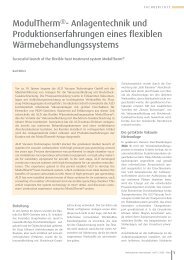
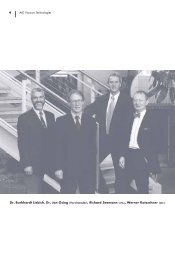
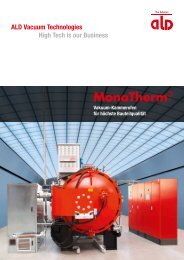
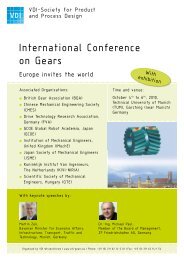
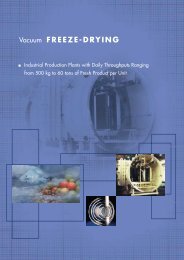
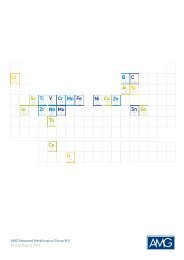
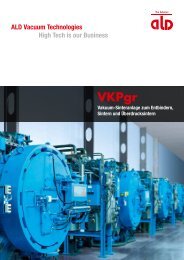

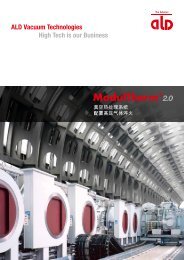
![TITANIUM brochure [PDF] - ALD Vacuum Technologies](https://img.yumpu.com/30889132/1/184x260/titanium-brochure-pdf-ald-vacuum-technologies.jpg?quality=85)

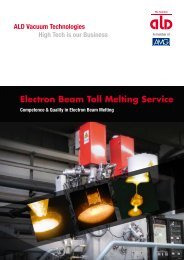
![(VID) Technology brochure [PDF] - ALD Vacuum Technologies](https://img.yumpu.com/30095121/1/184x260/vid-technology-brochure-pdf-ald-vacuum-technologies.jpg?quality=85)
